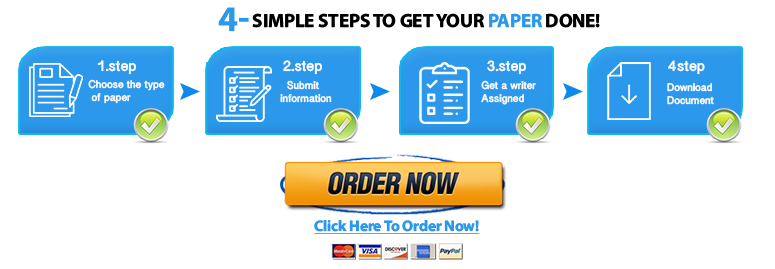Assignment
CHILD DEVELOPMENT THEORY: POWERPOINT
This week, you will be creating a PowerPoint presentation that addresses a major child development theorist and their corresponding theory. Using one of the Child Development Theory Case Studies [DOCX], apply the theorist’s ideas regarding child development within the parameters of a specific time period in that child’s life. Be sure to address the physical, social, and cognitive aspects of that particular time frame.
For this week’s assignment, Child Development Theory: PowerPoint, you will need to be familiar with attachment theory. Read the following to learn more.
In your Infants and Children: Prenatal Through Middle Childhood textbook:
Save your time - order a paper!
Get your paper written from scratch within the tight deadline. Our service is a reliable solution to all your troubles. Place an order on any task and we will take care of it. You won’t have to worry about the quality and deadlines
Order Paper Now- Chapter 7, “Emotional and Social Development in Infancy and Toddlerhood,” 261–269.
Assignment Requirements
- Communication: Communicate in a manner that is scholarly, professional, respectful, and consistent with expectations for professional practice in psychology. Original work and critical thinking are required. Your writing must be free of errors that detract from the overall message.
- Media presentation: Minimum of 10 slides, with notes ensure accessibility for everyone.
- Resources: At least three scholarly resources other than the course text or assigned journal articles. Include citations at the end of the presentation.
- APA guidelines: Resources and citations are formatted according to current APA style and formatting guidelines. When appropriate, use APA-formatted headings.
- Font and font size: Appropriate size and weight for presentation, generally 24- to 28-point for headings and no smaller than 18-point for bulleted text.
- -Choose one theorist and explain their theory of child
development that you found to be most interesting.
- Please provide at least one scholarly article to utilize as supporting evidence for your work in this section.
- Write in full sentences in the notes section—should be about three sentences.
- This will require at least two slides.
- -Based on the case study you select, describe the
physical, social, and cognitive aspects of child development that are observed.
- Describe these aspects within a specific time period of a child’s development.
- Please provide at least two scholarly articles to support your ideas in this section.
- Write a minimum of four sentences in the notes section in a professional and scholarly manner.
- This will require at least three slides.
- -Apply the theorist’s ideas regarding child development to
the child in the case study, within the parameters of the time frame discussed.
- Please provide at least two developmental markers that are either typical or atypical to the development of the child, which is why you are applying the theory in the first place.
- This will require at least three slides.
- Use at least one scholarly article to support your work in this section.
- -Write coherently to support a central idea with correct grammar, usage, and mechanics as expected of a psychology professional.
- Use APA Style and Format.
- Include a slide for your references that uses APA formatting.
- No notes are necessary for the reference slide.
CASE STUDIES:
The following case studies portray the three children in one family. Please select one child to use as your case study for your Week 4 assignment.
Family
Jamie and Dana are parents to three children: Avery, age five; Jeremy, age two; and Marie, age three months. Both parents are non-drinkers, non-smokers, eat a vegan diet, and exercise regularly. During all three pregnancies and deliveries, Dana only took prenatal medications. She did not take pain management medications during deliveries, and no complications reported. Jamie is a grocery store manager for a major chain and Dana works as a local bank teller. The family owns a home, two vehicles, one cat, one dog, and a chinchilla. During one week every summer, the family takes a camping trip to the Adirondack Mountains. Dana is returning to work this week after her 12-week leave since giving birth to Marie.
Case Study #1
Marie, age three months, is a bouncing baby girl. She is 13 pounds, 23 inches long, and is fed primarily with breast milk. She recently began holding her head up on her own, gripping and rattling toys, and has been sleeping in six-hour stretches. She enjoys seeing her brother and sister daily, and recently began to giggle and smile when they come into her view or if she hears them. Marie and Jeremy will be brought to an in-home daycare together while Dana and Jamie are working. Since Dana has returned to work, Marie has begun waking and crying multiple times at night again.
Case Study #2
Jeremy, age two years, is a strong-willed boy. He was fed primarily with breast milk, and weaned only three months ago, when his younger sister was born. He loves all moving, car-like toys including trucks, vans, farm equipment, and race cars. He likes to throw his basketball into the hoop, and enjoys playing with his blocks to build towers and animal enclosures. Jeremy has recently been seeking independence. This is a change, since when his sister was born, he became extremely clingy to his mother and then his father. Jeremy often says, “Me do,” when asked if he would like help with a task. He also becomes inconsolable if he is unable to bring a toy car with him out of the home. He has no interest yet in using the toilet on his own. He will “try” if prompted by his parents, but this has not yet been initiated by Jeremy. Jeremy has been using small phrases, but at times his words are very difficult to understand- even for his parents. Many of his “s” words sound like “sch”.
The pediatrician has informed Dana and Jamie that Jeremy has fluid in his ears. Without having tubes implanted, Jeremy may suffer from additional speech delays.
Case Study #3
Avery, age five years, is an energetic little girl. She often talks about her dolls, stuffed animals, and artwork she has made. She loves to create and has enjoyed some aspects of kindergarten for this reason. Avery is above grade level in her reading scores, and reports that she loves to read about animals and babies. Avery loves being an older sister. She often will help her mother with changing diapers, feeding, or helping around the house. Avery is small for her age, at 27 pounds, and just over 36 inches tall. She does not have any issues with eating, exercising, and per blood work, she seems to be getting all necessary nutrients. Avery was born premature, at seven months. She was underweight, at four pounds, but was healthy enough to go home after just two weeks in the hospital. Although Avery is helpful around the home, interested in her siblings, and emotional toward her family members, she is extremely shy at school. She has been having trouble making friends. Her parent-teacher conferences are depicting that she has trouble focusing on any work, other than reading or art times. The teachers often allow Avery to get up to “get the wiggles out” otherwise she will shake her leg or completely disengage from the lesson.
"Looking for a Similar Assignment? Order now and Get 10% Discount! Use Code "Newclient"




